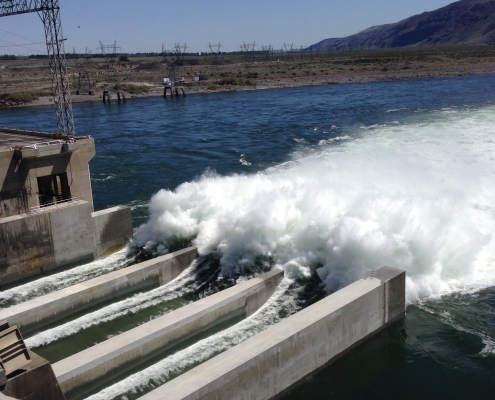Fluid Mechanics & Structures
Fluid mechanics, the study of fluid behavior at rest and in motion, is at the core of nearly all IIHR research. IIHR uses the basic governing equations of fluid mechanics to investigate a wide range of applications—river flow, atmospheric conditions, renewable energy (e.g., wind and water turbines), ship hydrodynamics, biological systems, and much more. For most of these applications, IIHR researchers use numerical analysis (computational fluid dynamics, or CFD) to explore and solve fluid flow problems. They validate these models with data from experimental modeling, field work, or environmental sensors.








